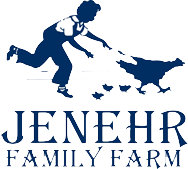In the fall, my radio goes funky. The radio station that I’ve set as my wake-alarm is slightly off klitter. Instead of the one I set, I get some head banging rock station out of Green Bay with lots of static. I have no explaination but it’s a consistent fall phenom.
Yesterday, the overcast weather caused the sattelitte internet connection to faulter. The same happened with our digital television reception (we don’t have cable T.V., just an antenna atop the roof).
Through all of this digital disturbance I realized again that here at the farm we utilize rural based services. Even through we’re 17 miles from Madison’s Capitol building, our 21st century communication and technology is as reliant on connection as my grandparents and greats were on the rural electrification administration 100 years ago.
I often forget that while we live very close to a big city with all the amenities, I don’t live in a city, which has infrastructure that include cables interlinked throughout the city. My recent “outage” reminds me that the new electricity of today is internet connection, not just connection but fast connection with the opportunity for plenty of data.
While I rail about the lack of rural services, the flip side of that coin is lack of food in some intercity regions, cities as small as Madison and certainly affecting Milwaukee. They call them “food deserts”, locations where access to fresh nutritious food is difficult and expensive. Neighborhoods with no grocery store or remote rural areas where access to those grocery stores requires long car rides, where families are forced to stock up with limited funds in their wallets.
Until recently, our local food supply became one of those deserts during the winter. Unless you had a freezer or knew how to can, you were dependent upon buying canned items that came from around the globe, often origin unknown. And while our winter purchases almost always include fruit from South America and Asia and vegetables from California and Mexico, there are options to the winter food deserts.
The fall CSA share will take you through Thanksgiving and right up until Christmas. Then you can come to the weekly winter markets in Madison and Milwaukee, where JenEhr along with a host of other farmers offer up our winter best – storage vegetables such as beets, radishes and carrots, along with greens from our hoophouses – kale and spinach in particular.
Plus, you can make some tasty changes to your meals. When tomatoes are finished, try our favorite from Waterhouse Foods – BLP; Bacon, Lettuce and Pepper. And even the lettuce can be switched up, using cabbage or lacinato kale. Today, winter in Wisconsin does NOT need to be a food desert as we continue to grow and store during the winter months. And we know that none of you are willing to go back to those terrible store bought, brought in from afar carrots.
